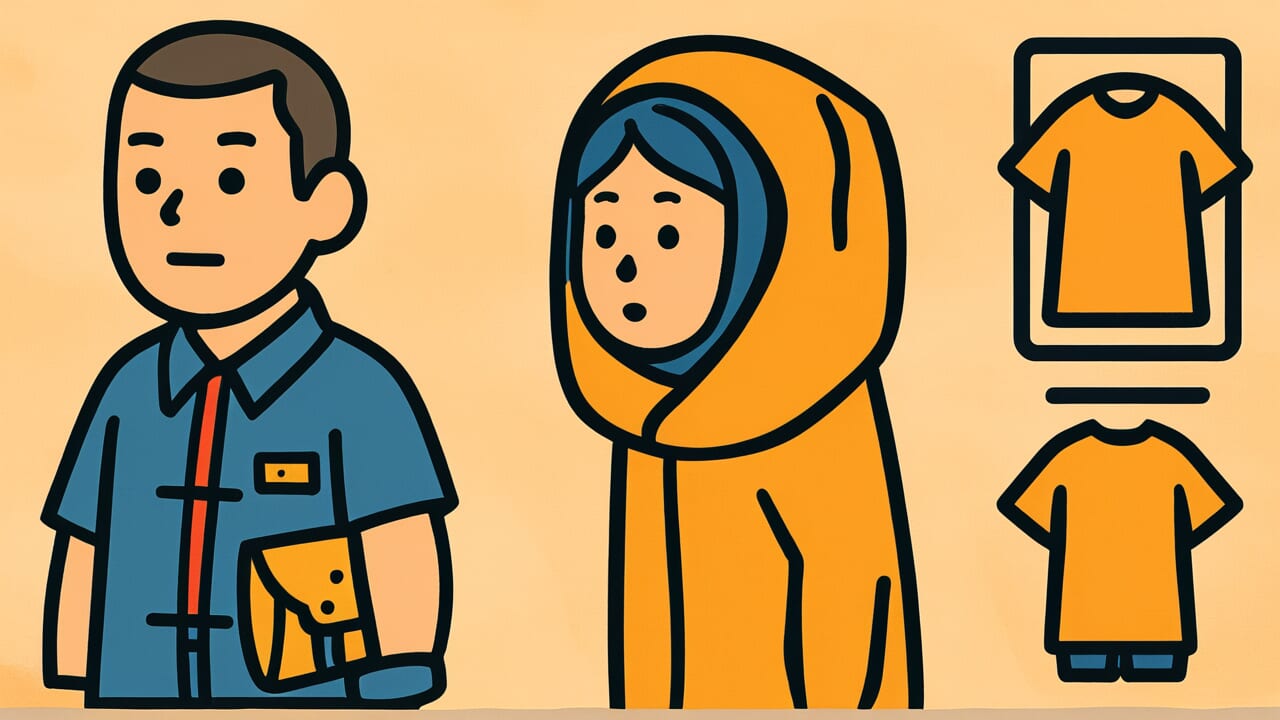How to Read “Kanto ruins itself with food, Kamigata ruins itself with clothes”
Kantō no kuidaore kamigata no kidaore
Meaning of “Kanto ruins itself with food, Kamigata ruins itself with clothes”
This proverb shows how people in different regions spend their money differently. Kanto people tend to spend on food, while Kansai people prefer to spend on clothing.
In Kanto, people value fresh ingredients and delicious cuisine. They invest generously in enjoying good meals. This became an important part of their culture.
In Kamigata (the Kansai region), people focus on appearance and fine kimono. They care deeply about looking good and maintaining proper presentation.
This expression doesn’t judge which approach is better. It simply describes cultural differences with a touch of humor. Each region developed its own values and lifestyle priorities.
Even today, people use this saying to explain regional differences in spending habits and values.
Origin and Etymology
This proverb likely emerged from the economic structures and cultural differences of the Edo period.
Edo (Kanto) was the political center under the Tokugawa shogunate. People gathered there from all over Japan. The city was home to samurai, merchants, and craftsmen.
A thriving dining-out culture developed in this diverse metropolis. Many single samurai and officials lived alone. Fresh seafood from Edo Bay was abundant. These factors increased interest in food.
The term “kuidaore” means spending so much on food that you ruin yourself financially. It shows extreme passion for eating.
Kamigata (centered on Osaka and Kyoto) was the commercial heart of Japan. Osaka was called “the nation’s kitchen” because of its vibrant economy.
In merchant towns, appearance and reputation mattered greatly. How you dressed directly affected your credibility in business. Kyoto had court and noble culture that prized beautiful clothing and kimono.
“Kidaore” means spending lavishly on clothes. It shows a commitment to dressing well no matter the cost.
This proverb spread because it captured real regional differences in economic activity and cultural values.
Usage Examples
- They say “Kanto ruins itself with food, Kamigata ruins itself with clothes,” and my Tokyo friend really does know all the best restaurants
- “Kanto ruins itself with food, Kamigata ruins itself with clothes” makes sense—my Osaka business contact always wears amazing suits
Universal Wisdom
This proverb teaches us that what people value depends greatly on their environment and culture.
We all live with limited resources. Time and money are finite. Our choices about priorities shape our personal culture and our region’s culture.
Kanto people chose food perhaps because they had abundant fresh seafood. Kamigata people chose clothing because of business needs and noble cultural influence.
Interestingly, both use the word “ruin” or “collapse.” This isn’t just casual spending. It shows passion reaching beyond reason. People invest heavily in what they truly value.
This proverb teaches us about diversity. Your values aren’t absolute. Other people make different choices. We need tolerance to accept this.
The wisdom here is seeing differences as personality, not superiority. Our ancestors used regional differences to teach deep truths about human nature.
When AI Hears This
Money spent on food disappears within hours of eating. It burns in the body, becomes heat, and eventually gets excreted. This is thermodynamics—the “transition to high entropy state.”
Ordered energy becomes disordered heat in a one-way process. Edo people spending on food chose extremely fast energy dissipation.
Kimono are different. Silk fabric properly stored lasts decades, sometimes over a century. Dye molecules are stable. Fiber crystallinity is high. They maintain low entropy for long periods.
Kamigata merchants investing in kimono were storing cultural energy in “preservable form.” Kimono can be resold and passed to the next generation. This is wisdom that slows entropy increase.
What’s fascinating is the opposite “time axis of wealth” in these two cultures. Edo sought “satisfaction in this moment” and dissipated energy quickly.
Kamigata chose “investment in the future” and fixed energy in material form. From a physics perspective, this wasn’t just preference. It was a fundamental strategic difference in wealth preservation.
Lessons for Today
This proverb teaches modern people to identify what truly matters to them.
Today’s world overflows with “correct answer” information. Eat this for health. Dress this way for success. Do this for happiness.
But this proverb gently reminds us: everyone values different things, and that’s okay.
Spend your time and money on what you genuinely value. Maybe it’s food. Maybe it’s fashion. Maybe it’s something completely different.
What matters is not following others’ values but taking pride in your own choices.
This proverb also promotes understanding others. You might see a friend spending on fancy restaurants or expensive clothes and think “what a waste.”
But for them, it’s a meaningful investment.
Value your own priorities while respecting others’ choices. This proverb teaches us that balanced way of living.



Comments